
Mary Clare Absalom was a British actress of stage, film and television.

Irene Rooke was an English theatre and film actress from Bridport, Dorset, England.

John Stuart was born to Scottish parents, and was a very popular leading man in British silent films in the 1920s. He successfully made the transition to talking pictures in the 1930s and his film career went on to span almost six decades. He appeared in 172 films, 123 stage plays, and 103 television plays and series.
Hindle Wakes is a stage play by Stanley Houghton written in 1910. It was first performed in 1912.
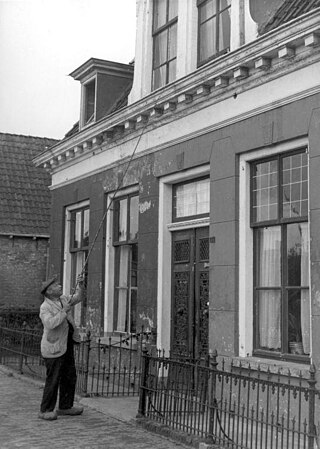
A knocker-up or knocker-upper was a member of a profession in the Netherlands, Britain, Ireland, and some other countries that started during, and lasted well into, the Industrial Revolution, when alarm clocks were neither cheap nor reliable. A knocker-up's job was to rouse sleeping people so they could get to work on time. By the 1940s and 1950s, this profession had more or less entirely died out, although it still continued in some pockets of industrial England until the early 1970s.
Maurice Elvey was one of the most prolific film directors in British history. He directed nearly 200 films between 1913 and 1957. During the silent film era he directed as many as twenty films per year. He also produced more than fifty films – his own as well as films directed by others.
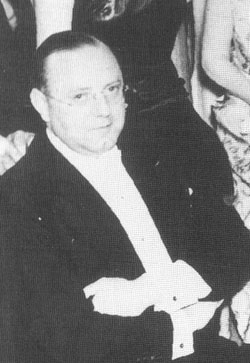
Victor Saville was an English film director, producer, and screenwriter. He directed 39 films between 1927 and 1954. He also produced 36 films between 1923 and 1962.
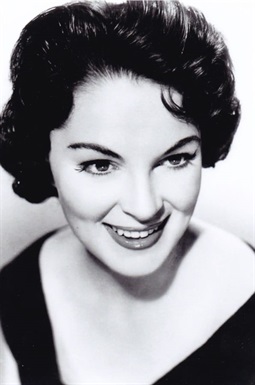
Lisa Daniely was a British film and television actress.

Sandra Dorne was a British actress.
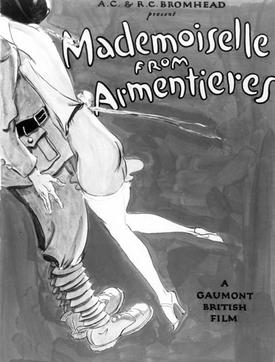
Mademoiselle from Armentieres is a 1926 British World War I silent drama film directed by Maurice Elvey and starring Estelle Brody, John Stuart and Alf Goddard. The film was Elvey's first collaboration with screenwriter Victor Saville. It was followed by a 1928 sequel Mademoiselle Parley Voo.

Estelle Brody was an American actress who became one of the biggest female stars of British silent film in the latter half of the 1920s. Her career was then derailed by a series of ill-advised decisions and she disappeared from sight for many years before re-emerging between the late 1940s and the 1960s in smaller supporting film and television roles.

Kitty is a 1929 sound part-talkie British drama film directed by Victor Saville and starring Estelle Brody and John Stuart. In addition to sequences with audible dialogue or talking sequences, the film features a synchronized musical score and sound effects along with English intertitles. The film was adapted from the 1927 novel of the same name by Warwick Deeping and marked the third co-star billing of Brody and Stuart, who had previously proved a very popular screen pairing in Mademoiselle from Armentieres (1926) and Hindle Wakes (1927).

Hindle Wakes is a 1931 British drama film directed by Victor Saville for Gainsborough Pictures and starring Belle Chrystall and John Stuart. The film is adapted from Stanley Houghton's 1912 stage play of the same name, which had previously been filmed twice as a silent in 1918 and 1927. Saville had been the producer on the highly regarded 1927 version directed by Maurice Elvey. Both Stuart and Norman McKinnel returned in 1931 to reprise their roles from the 1927 film.
Hindle Wakes is a 1918 British silent film drama, directed by Maurice Elvey and starring Colette O'Niel and Hayford Hobbs. It is the first of four screen versions of the celebrated and controversial 1912 play by Stanley Houghton. It which was a sensation in its time for its daring assertions that a woman could enjoy a sexual fling just as much as a man, without feeling any guilt or obligation to explain herself, and that she was perfectly capable of making her own life decisions without interference from family or the need to bow to social pressures.
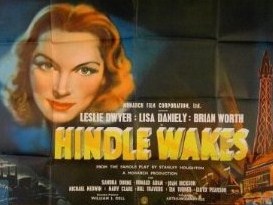
Hindle Wakes is a 1952 British drama film, directed by Arthur Crabtree and starring Lisa Daniely, Brian Worth, Leslie Dwyer and Sandra Dorne. It was the fourth screen adaptation of the 1912 play by Stanley Houghton, dealing with a young woman engaging in a holiday sexual flirtation, regardless of the disapproval of her parents or wider society.

Margaret Bannerman was a Canadian actress. She is known for her work in the English films The Gay Lord Quex, Lady Audley's Secret and Hindle Wakes. She had a successful career on stage, appearing in revues and light comedy.
Sailors Don't Care is a 1928 British silent comedy film directed by W. P. Kellino and starring Estelle Brody, John Stuart and Alf Goddard. It is based on a novel by "Seamark".

The Flight Commander is a 1927 British silent war film directed by Maurice Elvey and starring Alan Cobham, Estelle Brody and John Stuart. It was made by British Gaumont at their Lime Grove Studios in Shepherd's Bush. The celebrated First World War pilot Alan Cobham appeared as himself. It is also known by the alternative title of With Cobham to the Cape.
Mademoiselle Parley Voo is a 1928 British silent drama film directed by Maurice Elvey and starring Estelle Brody, John Stuart and Alf Goddard. It was made as a sequel to Elvey's earlier hit Mademoiselle from Armentieres (1926), and was equally successful. Both films refer to the popular First World War song Mademoiselle from Armentières. It was made at Lime Grove Studios in Shepherd's Bush.

Andrew Mazzei (1887–1975) was a French-born British art director who designed the sets for more than sixty films during his career. Mazzei began his career in the late 1920s during the silent era including on the futuristic High Treason. By the 1930s he was working for Gainsborough Pictures, designing backdrops for the critically acclaimed train-set thriller Rome Express in 1932.















